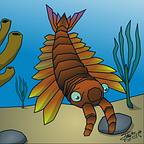Aquarium Trade and Alien Invasive Species
Releasing your goldfish into the wild is always a bad idea
∘ Invasive Species are Just a Single Mouse-click Away
∘ What is an Invasive Alien Species?
∘ Four Aquarium Species that Became Invasive
Invasive Species are Just a Single Mouse-click Away
As globalization grows, people from different parts of the world are more connected and international trade of aquatic ornamental species through the internet is becoming an increasingly common practice.
Since the ornamental fish industry is large and in most cases, poorly regulated, it has become one of the most important sources of alien (or “exotic”) species that can invade different aquatic habitats around the world [1].
The aquarium trade represents one of the five major avenues of the introduction of nonindigenous aquatic species that is expected to increase in the future, and it has already been recognized as the major pathway for exotic species in some regions [2, 3, 4, 5, 6].
What is an Invasive Alien Species?
An invasive alien species (IAS) is a species that arrives (often as a consequence of human activities) in a habitat that it has not previously occupied, then reproduces rapidly and spreads aggressively, and has the potential to cause ecological or economic harm [7].
IAS are widely recognized as the second greatest threat to biodiversity, after habitat destruction, due to their ability to drastically change entire ecosystems [8]. They can affect native species in different negative ways: they could predate them, change their habitat, compete with them, and infect them with new diseases [9].
Once established, invasive alien species are often extremely difficult to eradicate.
Since international trade can take place virtually anywhere thanks to the internet, aquarium species can be particularly invasive because they can potentially reach and affect all aquatic habitats around the world.
Releases of aquarium species are primarily related to the dumping of unwanted individuals, farms that breed organisms for sale or consumption, drainage of organisms containing water from aquariums, and deliberate releases [10].
Often, well-meaning people, unaware of the problem of introducing non-native species, release unwanted pets, believing that it is “more humane” to release them than to keep them captive.
Nowadays, one-third of the aquatic species on the list of 100 worst invasive species are associated with the aquarium and ornamental industry.
Until 2004, over 150 species of vertebrates, invertebrates, plants, and microbes that have invaded natural ecosystems have been documented to have come from aquariums and aquatic ornamental culture [10,11].
Globally, the U.S., Western Europe, and Japan are the largest importers of aquarium species and therefore, introductions of non-native aquatic species are more common in these regions [10,12].
Four Aquarium Species that Became Invasive
1. The Killer Algae
Caulerpa taxifolia
This green seaweed is native to the Pacific Ocean, the Indian Ocean, and the Caribbean Sea. It has successfully been established in the Mediterranean, the U.S., and temperate areas of Australia [13].
It forms dense monoculture beds that occupy most of the benthic habitat. It can directly limit the diversity of physical space and resources that can be used by native species [14,15].
2. The Plecostomus
Pterygoplichthys spp. and Hypostomus spp.
It is a freshwater fish native to South America that has become invasive in some regions of the U.S., Mexico, Taiwan, the Philippines, Japan, and Singapore [16].
Plecostomus can lead to drastic changes in the biogeochemical cycles and nutrient loading of aquatic bodies that can negatively affect the quality of the habitat for native species.
They can lead to the local extinction of native fish due as a result of competition or depredation.
Plecostomus have been reported to eat other fish eggs. It has also been observed that native birds can die attempting to swallow large specimens due to the spines and body armor of this species [17].
3. The Apple Snails
Family Ampullariidae
They are freshwater gastropods native to South America that have invaded many parts of Asia, North America, and Pacific islands, and Europe [18].
Invasive apple snail species represent a significant threat to wetland ecosystems. Since they have voracious appetites, they can influence the diversity of vegetation, affect habitat quality, and displace native snails [18].
They have become serious agricultural pests of wetland crops. Besides, they can infect humans with nematode parasites that can cause meningitis.
4. The Lionfish
Pterois spp.
They are native to the Indo-Pacific coral reefs that have become an IAS in the Western Atlantic, Caribbean Sea, and Mediterranean Sea.
The Lionfish are known for their venomous fin rays. The potency of their venom makes them excellent predators and hazardous to fishermen and divers [19].
The Lionfish poses a major threat to reef ecological systems of the Atlantic Ocean since it has a voracious appetite. Reported negative impacts on native species include competition for food and predation of juvenile marine organisms.
For the health of your pet and the safety of native wildlife, please do not release animals into the wild. They will probably not survive and will suffer before they die.
If your pet manages to survive, it can become an invasive species that can cause irreversible damage to native wildlife.
This not only applies to aquarium species, but all types of pets.
For more information about invasive alien species, check out these links [7, 9, 10, 11].
Let me know your opinion in the comments.
If you enjoy reading stories like these and want to support me as a writer, consider signing up to become a Medium member.
See also:
